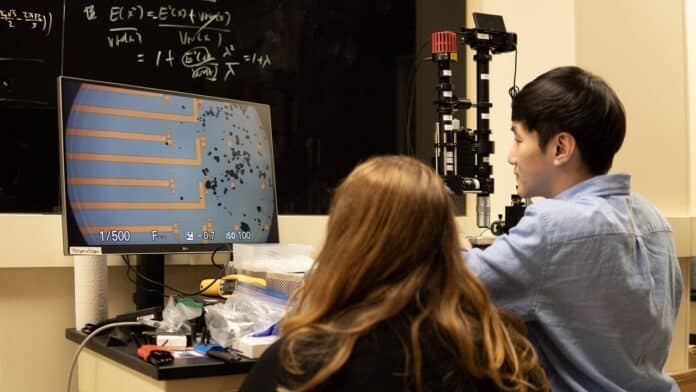A collection of micron-sized particles serve as the building blocks of lithium-ion batteries. It has long been believed that lithium diffuses into the bulk of the particle from the surface. Numerous applications, including energy storage, electrochromic windows, and neuromorphic computing, depend on electrochemical ion insertion in host structures. It is essential to understand how diffusion and response rates affect ion insertion rates when designing devices.
The University of Michigan found that cracks in lithium-ion batteries’ positive electrodes reduce the battery’s charging time, contradicting the view of many electric vehicle manufacturers who believe cracking increases battery life.
The new study shows that removing cracks in the positive electrode of lithium-ion batteries will not allow the battery particles to charge quickly without the extra surface area from those cracks.
Yiyang Li, assistant professor of materials science and engineering and corresponding author of the study published in Energy and Environmental Sciences, said, “On a road trip, we don’t want to wait five hours for a car to charge. We want to charge within 15 or 30 minutes.”
Researchers can transfer battery particles onto microelectrodes with microneedles. However, they must magnify the particles 200 times their size to see them.
The findings apply to over half of all electric vehicles batteries in which the positive electrode (cathode) is built of billions of microscopic particles made of either lithium nickel manganese cobalt oxide or lithium nickel cobalt aluminum oxide. The rate at which the surface-to-volume ratio of the particles determines the cathode charges.

Smaller particles should charge more quickly than bigger ones because they have more surface area than volume. Conversely, the conventional method only measured the average of the charging characteristics of all the cathode particles in the battery.
Jinhong Min, a doctoral student in materials science and engineering working in Li’s lab, said, “We find that the cathode particles are cracked and have more active surfaces to take in lithium ions not just on their outer surface, but inside the particle cracks, Battery scientists know that the cracking occurs but have not measured how much cracking affects the charging speed.”
The scientists discovered that not just on their exterior surface but also inside the particle fractures, the cathode particles are cracked and have more active surfaces to take in lithium ions. Using this discovery, researchers may better understand how cracking affects charging speed. The effect of cracking on the charging rate was examined using a specially made, 2-by-2-centimeter chip with up to 100 microelectrodes.
He said, “Back when I was in graduate school, a colleague studying neuroscience showed me these arrays that they used to study individual neurons. I wondered if we can also use them to study battery particles similar in size to neurons.”
A custom-designed chip with up to 100 microelectrodes transferred single particles onto the electrode array. The array was a lime-green square approximately the size of a dime, with small gold squares and rectangles surrounding it and two bigger golden rectangles in the center. Thin gold lines crossed paths between the gold in the center and the gold at the edges.
The new study found that the charging speeds of cathode particles were independent of their size. When larger particles crack, Li and Min believe that they behave like a collection of smaller particles or that lithium ions move very swiftly in the grain borders between nanoscale crystals. This is only possible for this to happen if the electrolyte in the battery crosses these boundaries, causing fissures.
The advantages of cracked materials are that designing long-lasting batteries with single-crystal particles that don’t break requires careful consideration. These particles must be smaller than the cracking cathode particles used today to charge faster. Making single-crystal cathodes out of various materials that can transfer lithium more quickly is an alternative.
However, these materials have lower energy densities or are constrained by the availability of required metals. The Lurie Nanofabrication Facility created the gadget, while the Michigan Centre for Materials Characterization researched it.
LG Energy Solution, the Battery Innovation Contest, and the University of Michigan College of Engineering funded the research.
Journal Reference:
- Jinhong Min, Lindsay M. Gubow, et al. Direct measurements of size-independent lithium diffusion and reaction times in individual polycrystalline battery particles. Energy and Environmental Science. DOI: 10.1039/D3EE00953J
